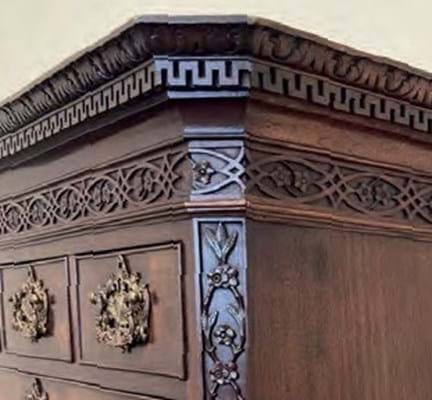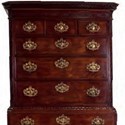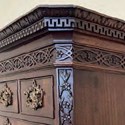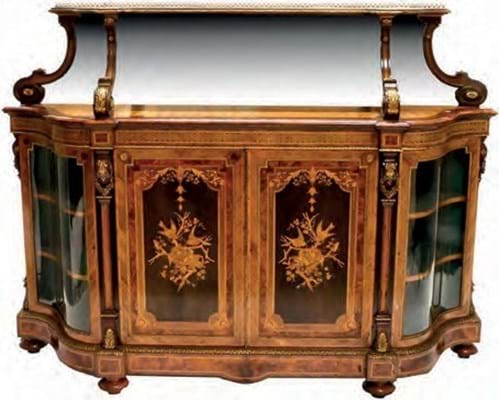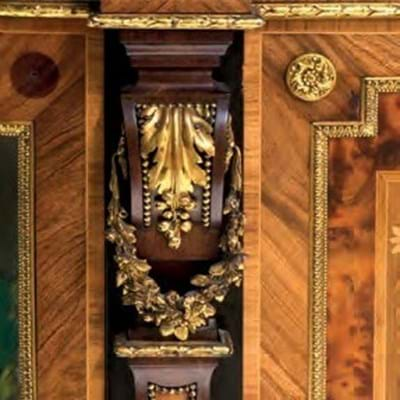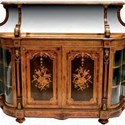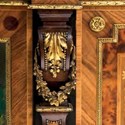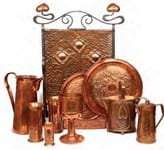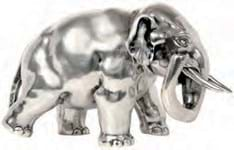Survivors of a tumultuous clash of cultures, they combine Aztec skills in preparing and applying the plumes of hummingbird and quetzal with subjects from Spanish baroque art.
Some were sent to Europe as objects of curiosity for the kunstkammer and tangible evidence of the conversion of the New World.
These are rare visitors to UK saleroom, although one emerged as part of the Spring Fine Sale at Tennants (22% buyer’s premium) in Leyburn on March 18.
Measuring 12 x 8in (30 x 20cm), a mosaic such as this might use close to 10,000 feathers. It is worked on a wooden panel prepared with agave leaves and cotton with a scene of St Christopher carrying the Christ Child. In the vendor’s family for three generations, it was first brought to England after a tour of South America in 1909 and in reasonable condition, save a lot of colour loss.
The best examples of plumasserie can be very expensive. Back in 2019, the Musée du Quai Branly in Paris used its right of pre-emption to secure a splendidly preserved example of similar size for €220,000 (£200,000) at the Drouot.
Depicting Christ as the Good Shepherd and scenes from the life of John the Baptist after a woodcut by German artist Hans Wechtlin, it carried an attribution to Juan Cuiris, the name of a craftsman associated with some of the best 16th century feather mosaics – including two once owned by Rudolph II of Habsburg (1552-1612) now in the Kunsthistorisches Museum in Vienna.
The example offered in Leyburn was not in this league. However, guided at £700-1000, it took £18,000.
Sèvres service
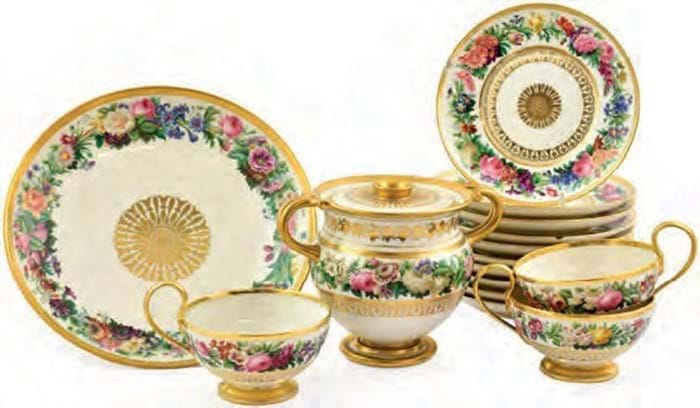
Sèvres porcelain Etrusque tea service from 1827, £35,000 at Tennants’ Spring Country House sale.
Sold for over 10 times the bottom estimate at £35,000 was a Sèvres Etrusque tea service made during the Bourbon Restoration in 1827.
It numbered a total of 35 pieces including a teapot and cove, a twin-handled sucrier and cover and a pair of helmet-shaped milk jugs, each painted with a deep band of flowers within formal gilt foliate borders.
A similar dejeuner service is recorded in the factory records as decorated ‘à guirlandes de fleurs frise d’or’ and delivered to M Baudouin on December 22, 1828.
Eclecticism and historicism characterised much of the 47- year tenure of prodigious factory administrator Alexandre Brongniart (1770-1847), with this set typical of the sometimes adventurous porcelains produced during this politically tumultuous period when technology, taste, and patronage were so often changing.
If this was once a relatively unfashionable collecting area (the ‘Sèvres mania’ that began in the late 1820s was very much focused on ‘old’ porcelain), then these quirkier ‘late’ pieces are today becoming more desirable.
In a more difficult market, a collection of 18th century Meissen figures did not perform well. Most went unsold.

Meissen Lottery Seller, £5000 at Tennants’ Spring Country House sale.
However, the figure of a Lottery Seller from the celebrated Cris de Paris series c.1755 did get away at a mid-estimate £5000.
Modelled by Peter Reinicke, it is based on a 1753 drawing by Christophe Huet. He had the idea of giving the drum (that the vendor carries across his back) a clock face and an iron needle that could be spun and “used for a game during the dessert”. This example had no restoration and only small loss to the tip of a finger.
Selling Kangxi porcelain is much easier. A 19in (48cm) high yen yen vase, c.1700, decorated with scholars in landscapes in underglaze blue and red on a celadon ground came for sale from a local, private, deceased estate. In good condition apart from chips to the underside of the rim and the foot, it was guided at £800-1200 but hammered at £11,000.
The core of a good selection of English pottery was the estate of Stephen Hamilton Rawlings. His Scarborough home was packed with creamwares and pearlwares, including a large collection of Pratt type toby jugs.
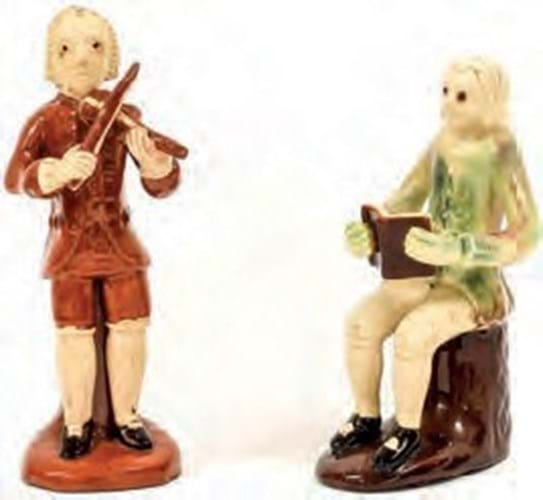
Two Astbury-Whieldon-type creamware figures of musicians, £2500 at Tennants’ Spring Country House sale.
Sold at £2500 (estimate £300- 500) was a lot of two Astbury- Whieldon-type creamware figures of musicians, c.1750. One depicting a seated chorister singing from a hymn book, the other a violinist, both had some professional restoration.
A Whieldon-type creamware bull-baiting group, c.1770, picked out in coloured tortoiseshell glazes, sold at £1500 (estimate £500-700).
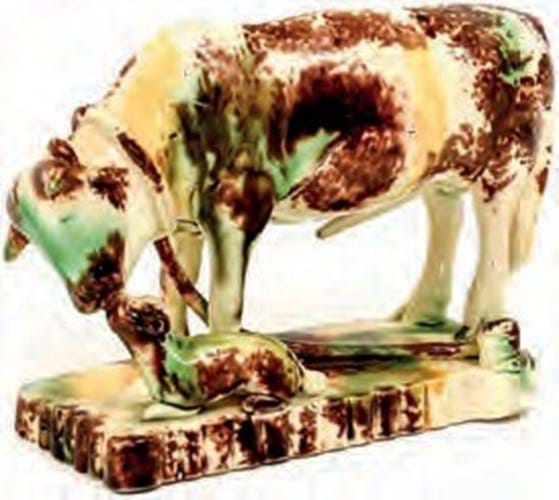
Whieldon-type creamware bull-baiting group, £1500 at Tennants’ Spring Country House sale.
Editing the morning ceramics session by selling most of the Rawlings collection through earlier general sales paid dividends.
Exceptional chest
So too did the ‘slightly smaller than usual’ approach to the furniture and works of art.
One piece stood out among the many pieces of Georgian era mahogany: an exceptional chest on chest c.1765. Perhaps to the untrained eye it was not so different from a similar chest sold in the auction at £750 but it rewards closer inspection. A London-made piece, perhaps even from the Chippendale workshop (it has the oak-lined drawers favoured by the Yorkshireman), it includes the quality timber, the metalwork and the craftsmanship associated with the best and most developed examples of the form. The blind fretwork and the carved blossom to the canted corners and the feet is particularly good. In excellent cosmetic condition, it took £15,000 (estimate £2000-3000).
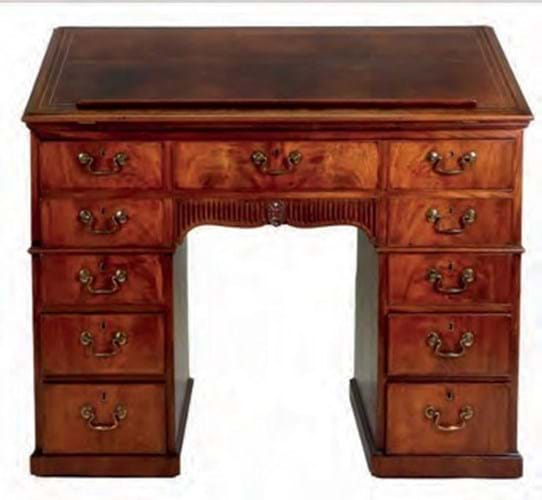
George III mahogany library desk, in the manner of Gillows, £6000 at Tennants’ Spring Country House sale.
A George III library desk from the last quarter of the 18th century was very much in the manner of Gillows. It has a pivoting top with an easel ratchet support, a deep ‘five-as-one’ secretaire drawer and six oak-lined drawers with original brasses. A number of similar desks are pictured in Susan Stuart’s book Gillows of Lancaster and London, 1730-1840. Estimated at £4000-6000, it made the top estimate.
Very much a child of the Victorian era was a fully stamped Gillow & Co specimen wood, marquetry, parquetry and gilt metal mounted side cabinet. Pieces of this size and type with its mirrored superstructure are not easy to place but this one was remarkable for its quality and may well have been shown at one of the international exhibitions the Gillow concern attended in the second half of the 19th century.
Five of the acanthus gilded metal mounts were missing (they could be recast if perfection is required) but this was more than reflected in the low estimate of £5000. It was still a lot of quality for the money when it sold at £9000.
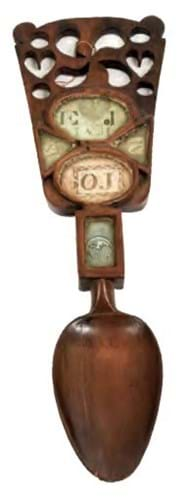
Welsh love spoon with glazed panels inscribed EJ OJ, 1831, £1600 at Tennants’ Spring Country House sale.
The sale achieved a hammer total of £406,065 with an 80% sold rate across the 373 lots.




